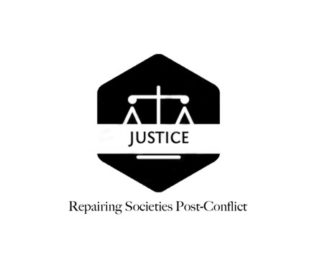Nallasera Nallamma was cooking lunch when the soldiers stormed into her remote village of Mylanthanai, one hour northwest of Batticaloa town, on August 9, 1992.
They rounded up the villagers, separating the men from the women and children. Then Nallamma heard these chilling words, “Should we kill everyone including the children or should we spare the children?” asks a soldier. Another one replies, “Yes, kill everyone”.
Mylanthanai is an isolated village where paddy cultivators and cattle farmers managed to make a meagre living, surviving at the mercy of the elements. They live in ramshackle huts with no running water and an electricity supply that is patchy. The nearest shop is thirty minutes away and carries only the basic necessities for a frugal life.
Before August 1992, there were 90 families living in the village but after the massacre, only 30 families remained. The others left for safer places, fearing that they would face further retaliation for identifying their attackers and bringing about their prosecution. Many of the injured victims are still traumatised and bear the deep scars of knife wounds that have not healed properly.
Some did not want to revisit the harrowing scenes and were fearful of repercussions even after 31 years but others like Nallamma (58) described how she was shot as she fled with her three year old child. “I fell down. I did not know what had happened to my child. I watched as they set fire to my house. Then I fainted and was taken to hospital and regained consciousness only after two days,” she said.
Nallamma remembers that before she ran away, she saw a pregnant woman being brutally hacked to death before her eyes.
Karappaiya Periyannan (69) said there were ten children who were killed but his son was spared after running away and hiding in a paddy field. “There are no reminders of the dead people because all their houses were burnt and set on fire. The army burnt it all,” he said. Thirty nine people were killed and 40 people were wounded in the attack.
One day before the August 9 attack on Mylanthanai, a bomb that exploded under a jeep on Kayts island in Jaffna, resulting in the death of a respected army officer, Major General Denzil Kobbekaduwa, and several high ranking military officers. It is believed that the attack on Mylanthanai the following day was in revenge for their killings, for which the LTTE took responsibility.
Some of the survivors were able to recognise their attackers, men who regularly came to their village to buy vegetables, chicken and eggs. The witnesses testified in court, identifying 24 soldiers who indicted on 85 counts including murder, attempted murder and unlawful assembly.
The preliminary inquiry should have taken place in the Batticaloa Magistrate’s Court but it was transferred to the Polonnaruwa Magistrate’s Court, making it difficult for witnesses to travel the long distance to an unfamiliar place. From there it was transferred to Colombo, even further away and more inaccessible for witnesses, although according to territorial jurisdiction, the trial should have been held in the Batticaloa Magistrate’s Court.
But the witnesses persisted in the face of threats and intimidation including messages from the Army that they would be at the receiving end if they gave evidence implicating the soldiers.
K.S. Rathnavale was the lawyer who appeared for the victims. “Instead of a trial at bar, where evidence would have been examined without emotion, the case was conducted before an all Sinhala jury. The evidence was compelling, based on accounts by eye witnesses. The judge instructed the jury to return a verdict of guilty but instead all the accused were acquitted,” Mr. Rathnavale said.
He pointed out that innocent people were killed for no reason as revenge act for an unrelated killing that took place in the north. The victims were all civilians, poor and marginalised people. “It is an aspect of continuing impunity that the soldiers did it but did not face the consequences because of shortcomings in the legal process,” he said. “For the last several decades those who have committed grave crimes on civilians are going scot free and no relief is given to the victims. This encourages the defence sector to commit more crimes in the assurance that they will not be punished for it. The cycle continues.”
Mr. Rathnavale said the witnesses, who were not very educated or sophisticated, gave evidence fearlessly because they were standing for the truth in the face of intimidation and harassment.
“It is a shame on our society to leave a set of people gravely affected without even an acknowledgement that a crime has been committed against them, leave alone financial compensation. It is a blot on our society. No one has spoken up and condemned the process, especially in the south. Even now it is not too late to revisit the matter when injustice has been done; society has a duty to give relief and restoration even if much time has lapsed,” Mr. Rathnavale concluded.


